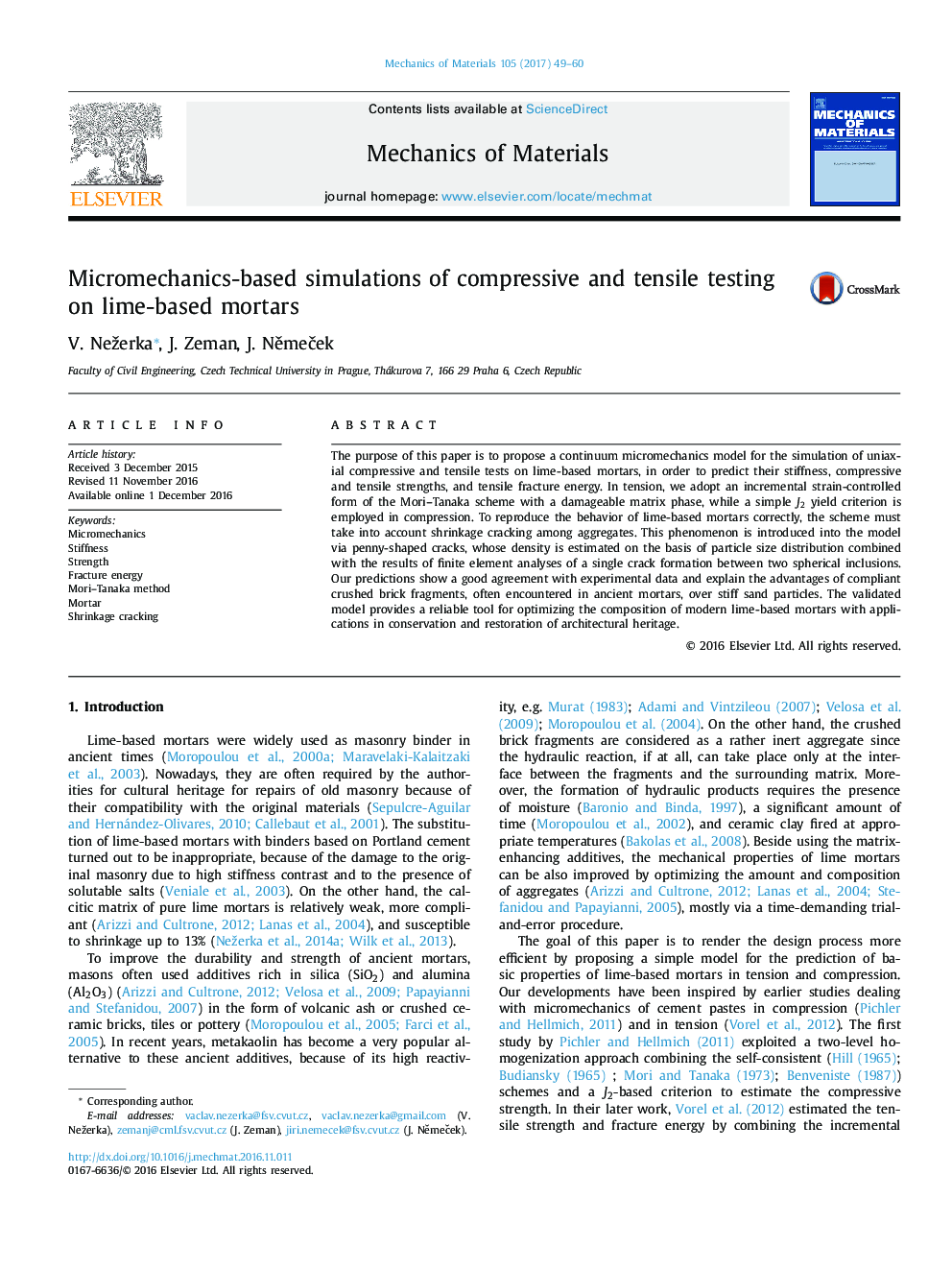| Article ID | Journal | Published Year | Pages | File Type |
|---|---|---|---|---|
| 5018536 | Mechanics of Materials | 2017 | 12 Pages |
Abstract
The purpose of this paper is to propose a continuum micromechanics model for the simulation of uniaxial compressive and tensile tests on lime-based mortars, in order to predict their stiffness, compressive and tensile strengths, and tensile fracture energy. In tension, we adopt an incremental strain-controlled form of the Mori-Tanaka scheme with a damageable matrix phase, while a simple J2 yield criterion is employed in compression. To reproduce the behavior of lime-based mortars correctly, the scheme must take into account shrinkage cracking among aggregates. This phenomenon is introduced into the model via penny-shaped cracks, whose density is estimated on the basis of particle size distribution combined with the results of finite element analyses of a single crack formation between two spherical inclusions. Our predictions show a good agreement with experimental data and explain the advantages of compliant crushed brick fragments, often encountered in ancient mortars, over stiff sand particles. The validated model provides a reliable tool for optimizing the composition of modern lime-based mortars with applications in conservation and restoration of architectural heritage.
Related Topics
Physical Sciences and Engineering
Engineering
Mechanical Engineering
Authors
V. Nežerka, J. Zeman, J. NÄmeÄek,
